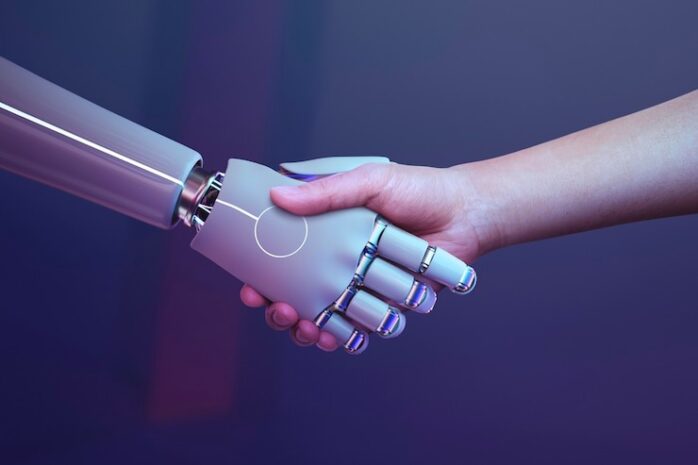
As a developer, you might know that E2E testing, aka end-to-end testing, might occasionally seem like a never-ending task. Trying to cover every integration, feature, user path, etc., usually leads to immense tiredness. And in this case, one overlooked problem might result in a significant setback. Then comes AI in the picture. AI test automation, particularly in E2E testing, may greatly enhance your efforts despite its contentious image in many domains. But how? Let’s understand it together!
E2E Testing: Let’s Break It Down!
End-to-end (E2E) testing is a software testing approach that checks a software product’s functionality from beginning to end. This kind of testing confirms that a system’s components can function in real-world situations.
Simulating a whole user experience is the aim of E2E testing. In addition to verifying the system being tested, its data integrity, and its integrations, E2E testing can also identify software dependencies.
Quality Assurance (QA) teams usually carry out end-to-end testing in specialized test environments. E2E testing begins by modeling common tasks that the program will do from the viewpoint of the user.

Let’s Understand – Intelligent Workflows
Intelligent workflow is an orchestration strategy that combines analytics, Machine Learning (ML), Artificial Intelligence (AI), as well as automation to help organizations complete diverse and complicated tasks more effectively.
Such workflows are a sequence of actions required to finish a task. Intelligent workflows improve the flexibility, agility, value, visibility, and efficacy of a test case by using technology like automation and AI.
Systems can be connected or communication routes can be streamlined using an intelligent workflow. By automating operations that are typically done by hand, intelligent workflows increase efficiency and allow more value. Additionally, they assist organizations in digitizing various organizational processes and gaining additional insights. Let us also tell you that hybrid or multi-cloud architectures can also be integrated with intelligent processes.
Intelligent Workflows: AI’s Role In Enhancing E2E Testing
As mentioned earlier in the blog, intelligent workflows combine analytics, ML, AI, as well as automation. AI in software testing transforms your work in many ways. Enhancing your test planning, expediting your test cycles, saving you a significant amount of time and money, and relieving you of a significant amount of labor are the four major ways it often benefits you. This is primarily made possible by AI’s three key capabilities:
- Assessing past data
- Using self-healing to adjust to changes
- Foreseeing possible problems
The influence of AI is much more significant when it comes to E2E testing. Consider an AI-powered tool that analyzes user interactions with your application to automatically create test cases. Or one that instantly resolves malfunctioning test scripts and adjusts to minor UI changes. That sounds so fantastic, isn’t it? Now, let’s take a closer look at some of the other instances to understand further:
- Script generation for dynamic tests
E2E testing analyzes the entire test rather than just specific aspects. Writing scripts by hand for each potential user path may be time-consuming and intimidating. By analyzing requirements and creating test cases based on them, AI makes this process quite simple.
AI also analyzes system logs, user behavior, and previous testing to automatically create scripts that change as your application does. This eliminates the need for constant manual labor and ensures that your tests cover all important user journeys.
- Optimized performance of tests
E2E testing entails executing a large number of test cases on several systems, which can be time-consuming. By ranking the most important E2E tests according to risk, previous failures, and recent modifications, AI expedites this process. This helps you release more quickly and implies a more focused approach. You also make sure that end-to-end functionality is maintained in the interim.
- Intelligent data production
Diverse and realistic data are necessary for E2E testing to replicate real-world user experiences. AI analyzes user interactions with your system to provide pertinent test data. Based on that, it replicates real-world usage situations, ensuring that your E2E tests faithfully capture how your application will function in actual use cases.
- Automated self-healing testing
Even minor UI changes might result in several test failures in E2E testing. Artificial Intelligence (AI)-driven solutions track these tests in real time, identify application modifications, and automatically modify scripts. This avoids spurious failures from interfering with your testing process.
- Superior bug identification
Complex system interactions are covered by E2E testing, which makes discovery of bugs even more difficult. AI finds flaws that are typically missed in traditional testing, analyzes whole workflows, and discovers odd patterns. Early detection of these problems stops expensive production-related difficulties from getting worse.
Examples of Use Cases From The Industry Incorporating Intelligent Workflows
A plethora of organizations and businesses from all across the globe, including healthcare, delivery services, many government organizations, and financial systems, can benefit from intelligent workflows.
For instance, to automate the process of checking for patient updates, a platform is coupled with healthcare systems. This improves the effectiveness of doctor-patient communication. Other organizations utilize similar linked systems to automatically screen candidates for employment.
The handling of commodities is another example. To inform a client that a package is close to being dropped off, for instance, a delivery service combines analytics, Artificial Intelligence, automation, and Internet of Things (IoT) sensors. An IoT gadget gathers geolocation information and automatically alerts the right client that their goods are on their way, if a delivery truck is nearby. This system’s sophisticated workflow helps reduce potential interruptions.
IBM previously helped a U.S. government agency integrate intelligent processes to drastically cut down on claim processing times. According to IBM, the average processing time was lowered from 15 days to five minutes due to the increased efficiency.
An intelligent workflow may significantly improve efficiency and visibility by re-creating or reorganizing some essential supply chains and activities.
Benefits of Using AI for E2E Test Automation
There are several advantages to integrating AI into our E2E testing procedures, including:
- Improved bug detection: AI is capable of precisely recognizing and classifying bugs, which helps expedite the debugging procedure.
- Faster test execution: AI-powered tests run more quickly than conventional scripts and give prompt feedback on modifications to the code.
- Decreased maintenance: Because AI-generated test scripts adjust to changes in the application, they require less maintenance.
- Realistic test data: AI can produce realistic test data, which enables you to successfully mimic user behavior in the actual world.
- Increased test coverage: AI-generated scenarios increase test coverage by encompassing a variety of user interactions and edge situations.
Examples Of AI Tools For E2E Testing
In this section, we will have a look at some of the AI-powered E2E testing tools that you can leverage in your organizations to significantly enhance efficiency.
- Selenium
If you are looking for a solution to automate web applications in several browsers, then Selenium is an excellent choice. It has a sizable support community and supports a wide variety of programming languages.
- Cypress
Cypress is excellent for quickly testing web apps in-browser. Because it is built on JavaScript and provides immediate feedback, debugging is less unpleasant. Just note that it lacks integrated cross-browser testing and only supports JavaScript.
- Appium
Testing mobile apps may be challenging, but Appium makes it easier. It supports online, hybrid, and native apps on both iOS and Android. The primary drawback? Due to its reliance on emulators and actual devices, it may be sluggish.
Automation testing tools and frameworks are revolutionized by the incorporation of AI. These solutions can provide more advanced features, including increased accuracy, quicker test generation, and better testing coverage by utilizing AI. This development guarantees that testing procedures are not only more effective but also better equipped to precisely handle complicated testing requirements.
A Step-by-Step Guide To Implementing AI in E2E Testing
A well-defined and organized procedure that complements your testing lifecycle is required when implementing AI for E2E testing. Here’s how to successfully include AI:
Step 1: Develop an E2E testing plan
Draw out the important processes of your application. Determine whether regions are vulnerable to complicated user interactions, frequent changes, or failures. You’ll save time and lower risks by concentrating on high-impact testing areas.
Step 2: Choose AI-powered testing tools
Select the right tools for the job. Look for features like root cause analysis, self-healing scripts, and quick test case production. For long-term success, make sure it fits with your current frameworks and CI/CD processes.
Step 3: Establish a framework for test automation
AI test management tools should now be included into your existing framework. For continuous, automated testing following each deployment, define test environments, create testing schedules, and integrate everything with your CI/CD workflow.
Step 4: Create and maintain test cases
Analyzing previous tests, user behavior, and system modifications provides the foundation for creating AI testing. AI automatically updates your test scripts as your app develops, saving manual labor and maintaining the accuracy of your tests.
Step 5: Implement AI-driven test cycles
With AI managing intricate activities like data production, test scheduling, and real-time problem identification, it’s time to start running tests. This minimizes expensive late-stage changes and expedites the testing cycle.
Step 6: Examine and enhance
Discover recurring issues, performance patterns, and possible failures by utilizing AI-generated insights. Future testing cycles are strengthened and product dependability is guaranteed by this ongoing learning process.

Challenges When Leveraging AI-Backed E2E Testing
It is not unknown that AI has the potential to revolutionize E2E testing, but, it also presents a number of challenges. The following are some of the most significant obstacles you may encounter:
- Problems with data quality
AI is not human. It can only be as intelligent as the data it is being fed by a human. Insufficient, biased, or inconsistent data might confuse AI algorithms and yield inaccurate test results.
- Insufficient transparency
The way AI makes decisions might appear to be a mystery. It’s not always easy to understand why a test succeeded or failed, which undermines trust.
- Regular maintenance
Continuous upgrades are necessary for AI-based assessments as your program develops. Ignoring this might lead to issues like false positives, missing bugs, or out-of-date test scripts.
- Complicated integration and setup
Sometimes, it might be challenging to include AI into your testing framework. This happens particularly if your team is not well-versed in AI. To realize its full potential, proper setup is essential.
- High initial outlay of funds
With the exception of Aqua Cloud, AI-powered solutions frequently need a large upfront investment in hardware, software, and training. For startups or smaller teams, this might be a hurdle.
Notwithstanding these difficulties, when done correctly, the benefits of AI-driven E2E testing—such as quicker releases, fewer errors, and more intelligent automation—make the work worthwhile.
Conclusion
AI-powered E2E testing allows your QA staff to work more efficiently rather than more laboriously. You can accomplish nearly everything using AI a few times quicker than you could on your own. But, let’s be honest. Does it occasionally give you erroneous results and create reliability concerns? Indeed. However, when utilized effectively, it may improve your productivity by adjusting to changes, removing monotonous chores, and producing high-caliber releases on schedule.
For developers, integrating AI into E2E testing may be revolutionary. You may increase test coverage, save maintenance costs, and expedite your development process by automating the production of test data, scenarios, scripts, and test execution.
AI has the potential to revolutionize E2E testing as it develops further, which will ultimately result in more reliable and effective software development procedures.





